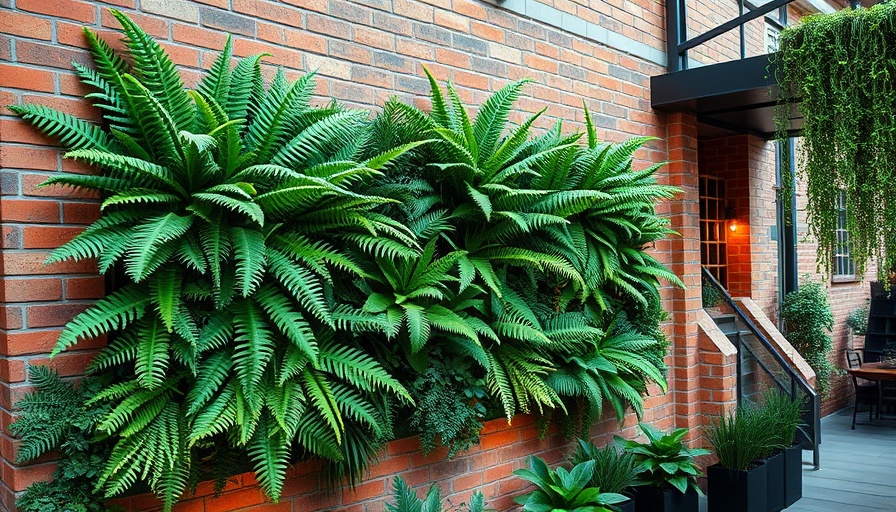
Transform Your Outdoor Space with Simple Changes
A common problem for many homeowners is a dreary-looking side yard that seems to serve no purpose. Tara, Adam, and Graham’s innovative DIY ideas can breathe new life into these neglected spaces by utilizing simple yet effective techniques. With just a few modifications, your ordinary patch can become a stunning feature of your home.
In 'Stylish Side Yard Transformation | Great Home Ideas', the discussion dives into innovative DIY gardening techniques, exploring key insights that sparked deeper analysis on our end.
Upcycling: A Sustainable Approach to Garden Decor
One of the heartwarming aspects of gardening is its connection to sustainability. Instead of tossing out old furniture or picture frames, consider Tara's suggestion of upcycling. By painting them in vibrant colors or adding texture paste, you can create unique garden decor that showcases your personality. This method not only helps the environment by reducing waste but also adds a personal touch to your garden.
Creating a Functional and Aesthetic Oasis
Adam's DIY project takes a practical approach by transforming a simple side yard into a functional yet beautiful space. His use of treated pine for steps adds a rustic charm, while vibrant plants create a lush oasis right at your doorstep. Incorporating elements like a potting shelf or a bird bath not only enhances the visual appeal of the garden, but they also encourage wildlife to thrive in your outdoor space. Such features ensure that your garden is alive and active, making it a delightful retreat.
Color & Texture: Keys to a Lively Garden Design
To make your garden eye-catching, it’s essential to focus on color and texture. The choice of colors like the rich 'Domino' gray for walls can serve as the perfect backdrop for lush greenery. Adding textures through timber or lush plant life can ensure your outdoor space doesn’t just look beautiful but feels alive. The interplay of color and texture captures the attention and invites joy, making your side yard a welcoming place.
Gardening for Wildlife: Creating a Bird-Friendly Retreat
One of Graham’s innovative ideas involves repurposing pots into a bird bath. With all the busy lives we lead, encouraging nature into our homes is more important than ever. By offering birds a safe water source, you're contributing to local wildlife while also enjoying the relaxing sight of these creatures bathing and frolicking in your garden. It’s about creating a space that is not only beautiful but also supportive of life.
Step-by-Step Implementation: Your Weekend Project Awaits!
If you’re worried about the time commitment, fear not. These projects are designed to be completed over a weekend, allowing you to refresh your outdoor area without a lengthy investment of time. Also, they require minimal financial investment, ensuring you can achieve a stunning transformation without breaking the bank. For instance, using leftover materials or affordable plants available from local nurseries can help you stick to a budget.
The Unique Benefits of Home Gardening
Investing time and effort into a garden provides numerous benefits beyond just aesthetics. Engaging in gardening promotes relaxation, reduces stress, and can enhance your physical health through light exercise. Furthermore, it fosters community, as neighbors often come together to share tips and seedlings, exchanging suggestions and creating bonds. Gardening, thus, is not merely a chore but a rewarding pursuit that connects us to nature.
Your Invitation to Transform
Inspired yet? It’s time to gather your gardening tools and get creative! Whether you choose to transform your drab side yard or create a cozy herb garden, the world of DIY gardening is expansive and rewarding. Take a weekend to experiment with colors, shapes, and new plants—your efforts will undoubtedly lead to a space that reflects your unique style.
Let’s cherish our green spaces and continue to nourish our connection with nature. Happy gardening!
 Add Row
Add Row  Add
Add 




Write A Comment